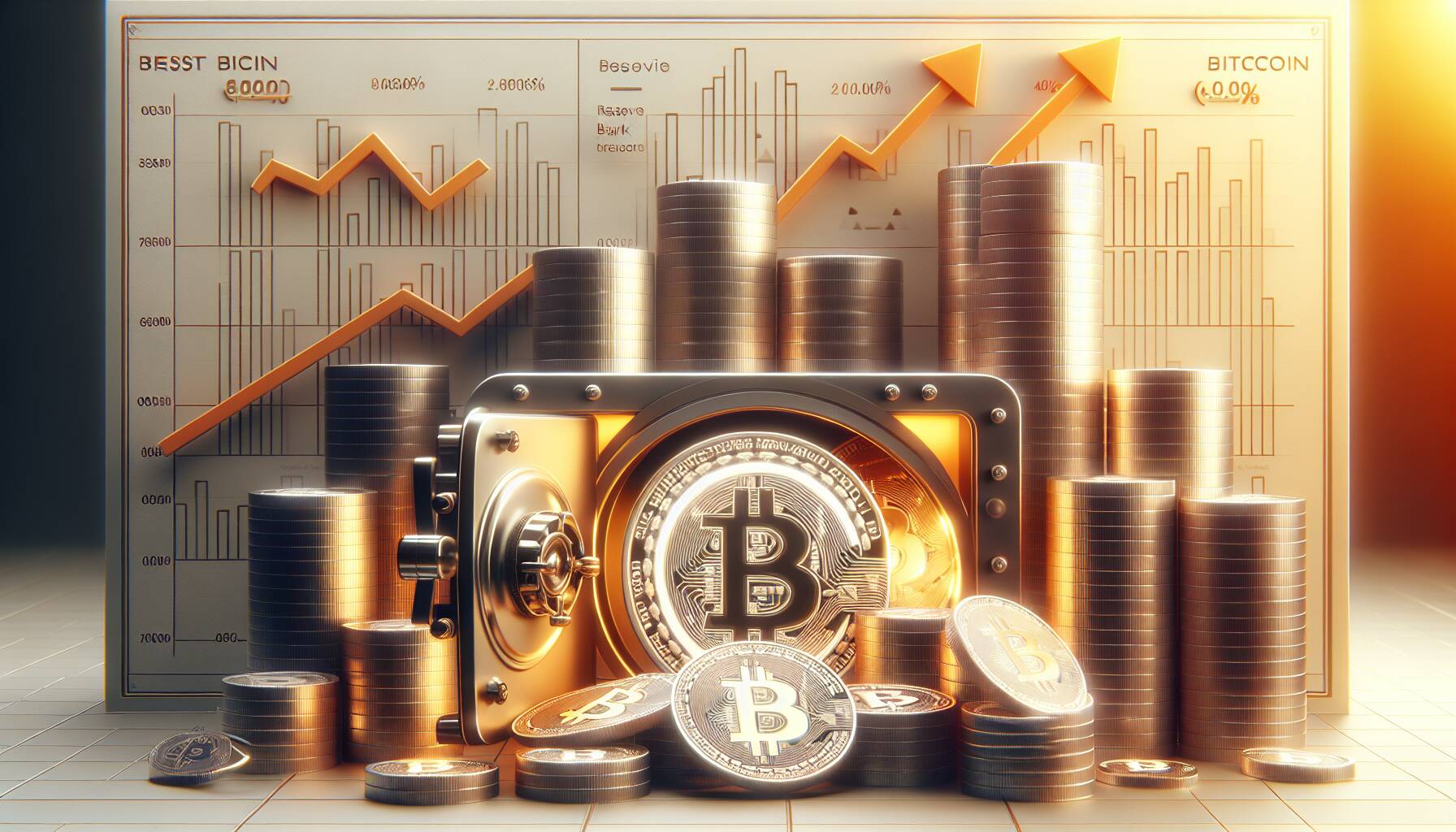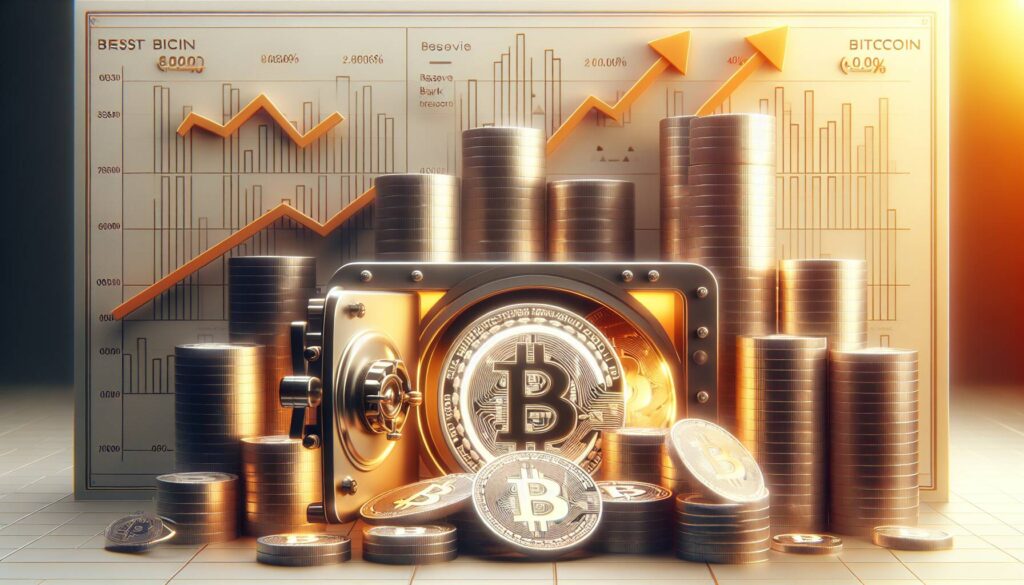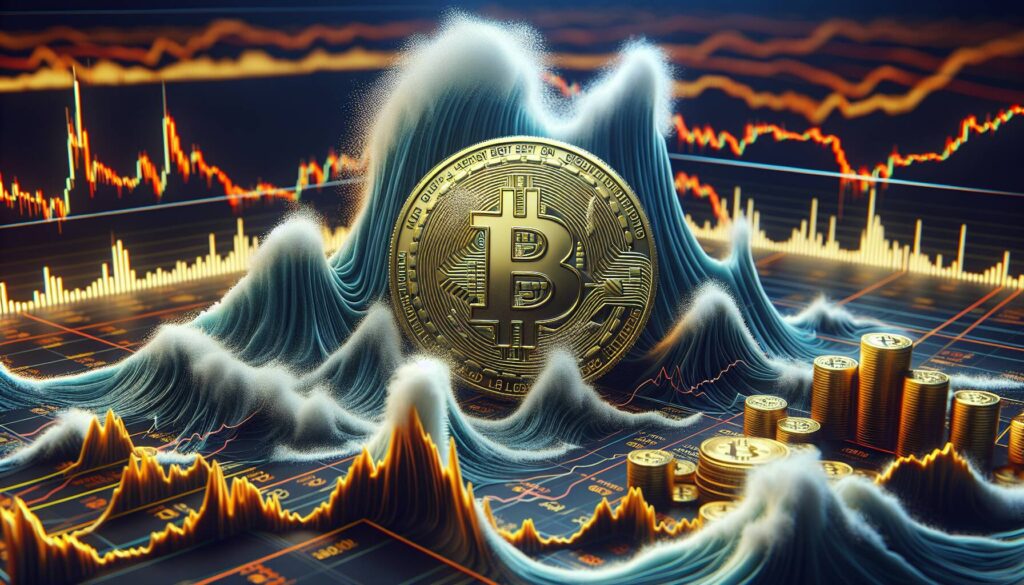Bitcoin (BTC) is poised to join gold as a recognized reserve asset within the next decade, according to a recent report from Deutsche Bank. While gold will likely maintain its status as the leading official holding, the report highlights a gradual shift towards diversifying assets in global reserves. Notably, the U.S. dollar still comprises a substantial 57% of these reserves, yet signs of change are becoming increasingly apparent.
In a significant development, China has reportedly reduced its U.S. Treasury holdings by $57 billion in 2024, indicating a potential move toward alternative assets. As momentum builds for cryptocurrency regulation across major markets, Deutsche Bank underscores the complementary roles that bitcoin and gold might play as hedges against inflation and geopolitical uncertainties. Their scarcity and low correlation with other traditional assets bolster their appeal.
Gold recently peaked at a record high of $3,763, with a remarkable year-to-date increase of over 40%. This robust performance contrasts with bitcoin, whose volatility has historically hindered its acceptance as a reserve asset. However, analysts at Deutsche Bank noted a significant decline in bitcoin’s volatility, which hit historic lows in August, even as its price surged past $123,500. This trend suggests that bitcoin may be moving away from its speculative roots.
Importantly, the report asserts that neither bitcoin nor gold is likely to displace the dollar, as governments prioritize the protection of their monetary sovereignty. Instead, Deutsche Bank envisions a pathway for bitcoin’s adoption similar to that of gold, transitioning from skepticism to mainstream acceptance over time, driven by regulation and macroeconomic trends. As investors increasingly seek alternatives to traditional assets, bitcoin may evolve from a speculative play into a vital component of the global financial landscape.
Interestingly, the report also mentions a correlation between market dynamics, noting that gold values have risen following significant fluctuations in bitcoin prices, suggesting a potential shift in investment strategies.

Bitcoin’s Path to Reserve Asset Status
Key points from the Deutsche Bank report on Bitcoin and gold as complementary assets:
- Bitcoin and Gold as Reserve Assets:
- Bitcoin is projected to join gold as a recognized reserve asset within the decade.
- Gold is expected to maintain its lead in official reserves for the time being.
- Global Reserve Composition:
- The U.S. dollar constitutes 57% of global reserves.
- Signs of diversification are emerging, evidenced by China’s reduction of U.S. Treasury holdings by $57 billion in 2024.
- Scarcity and Performance:
- Both Bitcoin and gold serve as hedges against inflation and geopolitical risks due to their scarcity.
- Gold reached a record high of $3,763, increasing over 40% year-to-date.
- Bitcoin’s Volatility Trends:
- Bitcoin’s volatility has decreased significantly, hitting historic lows while prices surpassed $123,500.
- This decline in volatility could indicate a separation from its speculative reputation.
- Regulatory Landscape:
- Momentum for crypto regulation is increasing across major markets.
- Both assets are unlikely to replace the dollar as governments insist on protecting monetary sovereignty.
- Future Outlook:
- Bitcoin’s adoption is anticipated to follow a trajectory similar to gold’s, transitioning from skepticism to acceptance.
- As investors look for alternatives to traditional assets, Bitcoin may solidify its role as a key component of the global financial system.
Bitcoin’s Rise as a Reserve Asset: A Comparative Analysis with Gold
In recent discussions surrounding asset diversification, the spotlight has shifted towards Bitcoin (BTC), with Deutsche Bank indicating its potential to be recognized as a reserve asset alongside gold. While gold continues to dominate the field, its recent surge to record highs reflects the enduring strength of traditional safe-haven investments. However, Bitcoin’s decreasing volatility and rising price—recently surpassing $123,500—signal a transformative phase that could redefine its standing in global finance.
Competitive Advantages: One of Bitcoin’s most compelling advantages is its inherent scarcity, akin to gold. As economies worldwide grapple with inflation and geopolitical tensions, both assets are viewed as reliable hedges, offering investors a sense of security. Additionally, Bitcoin’s reduced volatility presents a significant shift away from its speculative nature, making it more appealing for institutional investors and fostering the potential for mainstream adoption. The evolving landscape of cryptocurrency regulation could further bolster confidence in Bitcoin as a legitimate store of value.
Competitive Disadvantages: Despite these promising traits, key challenges remain. Bitcoin’s status as a decentralized digital currency also brings uncertainties regarding regulatory frameworks, potentially hindering its integration into traditional financial systems. Furthermore, while Bitcoin may gain traction among investors seeking alternatives, its volatility—though diminished—could still deter conservative capital from fully embracing it as a legitimate asset compared to the time-tested stability of gold.
Potential Beneficiaries and Challenges: Institutions looking to diversify their portfolios and hedge against economic uncertainty could reap significant benefits from Bitcoin’s increasing stability and regulatory clarity. In contrast, traditional banking frameworks may find themselves grappling with the implications of cryptocurrency as it begins to vie for reserve asset status, potentially disrupting long-held monetary principles. As the lines between traditional finance and digital assets blur, maintaining a competitive edge will require adaptability and strategic foresight from financial entities. Overall, while Bitcoin’s journey mirrors that of gold, its evolution will undoubtedly present both opportunities and challenges for various sectors within the financial ecosystem.

















